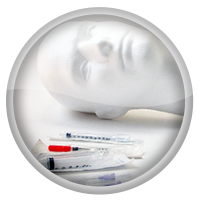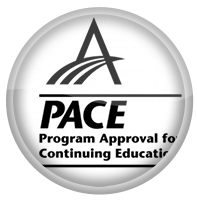Botox Training Wishlist

 If you were going to create your own perfect Botox training course, what would it include? How would it operate? That is something that Dr Howard Katz thought of, and then he realised that he could easily create a world respected Botox training course that would make it simple and easy for medical health care staff from all the way around the world to access the best training in Botox treatment and care. After all, it has been Dr Howard Katz that has been investing his time and research into Botox for many years, and he in fact holds many of the patents that Botox practitioners will use on a day to day basis. After thinking long and hard about all of the medical, practical, and business requirements, Dr Howard Katz created the world’s first ever Online Botox training course.
If you were going to create your own perfect Botox training course, what would it include? How would it operate? That is something that Dr Howard Katz thought of, and then he realised that he could easily create a world respected Botox training course that would make it simple and easy for medical health care staff from all the way around the world to access the best training in Botox treatment and care. After all, it has been Dr Howard Katz that has been investing his time and research into Botox for many years, and he in fact holds many of the patents that Botox practitioners will use on a day to day basis. After thinking long and hard about all of the medical, practical, and business requirements, Dr Howard Katz created the world’s first ever Online Botox training course.
There are several aspects to this course that completely set it apart, and the fact that it is available online is just one of them. It is, however, one of the most dynamic, and it has enabled countless doctors, dentists, nurses, and other medical professionals to gain access to the best possible training, day or night. That is because the training lessons and information packs can be accessed at any time. Another great positive aspect of this course is that it includes proven business and marketing techniques that will ensure that after you have invested your time in learning these techniques, you will have the patients to use them on! There is nothing more frustrating than being able to offer a procedure, but no one really knowing that. You will be able to extent your surgery and practice through these clever marketing techniques, and before you know it you will be inundated with requests from patients to give them Botox injections.
Although this course is undertaken and completed completely online, that does not mean that at the end of the day, you will have nothing to show for it. In fact, it is quite the opposite. You will receive a paper certificate from Dr Howard Katz recognising the training that you have undertaken, which you will be able to display on your wall to reassure your patients. And even more than that, you will receive AGD Continued Education credit, which you can use to prove that you have undertaken the program.
But the benefits to taking on this course do not end there. If you live close to, or ever travel to San Diego for work or pleasure, then you will be able to take up the very generous offer that Dr Howard Katz has made to any of those that complete his Online Botox training course. All those that complete the course are warmly invited by him to a semi-private hands on class, which means that they will be able to brush up on their practical technique with the world leader in the field. During your training – and after you have completed the course – Dr Howard Katz loves engaging with other medical staff. It is totally possible for you to receive an answer for a specific question, and even a consultation on a particular patient just by sending a photograph. Within twenty four hours, you will receive a reply.
There really are no reasons not to sign up for this amazing course, and we highly recommend that you do so as soon as possible.
Trending – Botox Training In The Medical Community

If you had to pick one medical procedure that is becoming more and more popular all around the world, what would it be? The honest answer may surprise you: it is Botox. In fact, in 2014 so far there have been over two hundred and forty six thousand Google searches for the term ‘Botox’ . . . every single month. That makes over a million people that are looking into whether or not Botox is the best thing for them, and that means that there is a huge pool of patients just sitting out there, desperately searching for Botox expertise. If you are a medical professional, but you do not currently have Botox training, then this is the time for you to really invest in your professional development, as well as encourage extra income for you and your family.
 Many health professionals do not like to include a new procedure into their medical repertoire, because they believe that it will be complicated and expensive. However, this amazing Online Botox training course will quickly prove that this is definitely not the case when it comes to Botox. You will only need to take one quick training course to be able to offer your patients Botox injections, and the materials instantly cover themselves. What’s more, unlike many other types of medical procedures, a Botox treatment will almost always take less than ten minutes, which means that you can organise many of them into one day, bringing you a higher level of profit.
Many health professionals do not like to include a new procedure into their medical repertoire, because they believe that it will be complicated and expensive. However, this amazing Online Botox training course will quickly prove that this is definitely not the case when it comes to Botox. You will only need to take one quick training course to be able to offer your patients Botox injections, and the materials instantly cover themselves. What’s more, unlike many other types of medical procedures, a Botox treatment will almost always take less than ten minutes, which means that you can organise many of them into one day, bringing you a higher level of profit.
The Online Botox training course has been carefully designed by Dr Howard Katz, a man who has been at the forefront of Botox research and design for many years. He is very well regarded in his field, and even holds the patents for many of the injections that you will use throughout your training. There is absolutely no one better to create a state of the art training course for Botox administration, and many people throughout the world are ecstatic that the knowledge and skills of Dr Howard Katz will now be available throughout the world.
But beyond the incredible medical training that this Online Botox training course provides, there is also the added bonuses of the extra business training that Dr Howard Katz has made available to all of his students. This training with enable you to carefully market your Botox treatments, and ensure that you keep patients coming in for the injections. It will also teach you how to ensure that your patients have a wonderfully positive experience, giving you an excellent reputation and meaning that you can rely on recommendations to others.
Do not leave it to others to make a small fortune from administering Botox treatments, and do not let your potential patients go to those that are not fully trained and could cause them harm. Now is the time to really invest in Botox treatment and care, and there is no better way to do that than to take on the Online Botox training course.
Botox Injection Training – Live Online & Interactive

Skip To Training Course Details >>

You want to increase your clientele, but your resources are limited, your time especially so. Adding new services in order to acquire new patients usually involves a significant investment in equipment and training. We understand and we want to help. This year, according to Google, more than 246,000 searches are done for information on Botox every month. Botox typically isn’t covered by insurance, so individuals seeking Botox Injections have the disposable income to pay for it. No anti-aging treatment offers results as quickly or as long lasting as Botox. This is why Botox is the most widely sought after anti-aging treatment in the United States.
 Our Botox training doesn’t stop at teaching you how to administer Botox injection, we also teach you how to explain the benefits of treatment to your prospective patient and how to turn your patients into huge fans that will recommend you to everyone they know.New injectable products are being approved all the time, and injectable products are consistently being approved for new uses. This is why is it so important to make certain you find a course that teaches the most current FDA approved as well as off-label treatments for both aesthetic and therapeutic uses and how they should be used with dermal fillers. Many Botox injection training courses will get you qualified, but our course will offer you added credibility. Course director Dr. Howard Katz is named on the patents for all current Botulinum toxin products. The course is offered online, but on successful completion, you will receive a certificate of completion from Dr. Katz himself.
Our Botox training doesn’t stop at teaching you how to administer Botox injection, we also teach you how to explain the benefits of treatment to your prospective patient and how to turn your patients into huge fans that will recommend you to everyone they know.New injectable products are being approved all the time, and injectable products are consistently being approved for new uses. This is why is it so important to make certain you find a course that teaches the most current FDA approved as well as off-label treatments for both aesthetic and therapeutic uses and how they should be used with dermal fillers. Many Botox injection training courses will get you qualified, but our course will offer you added credibility. Course director Dr. Howard Katz is named on the patents for all current Botulinum toxin products. The course is offered online, but on successful completion, you will receive a certificate of completion from Dr. Katz himself.
 You’re probably wondering how in the world you can learn to administer Botox injection over the internet. Prior to the course, you will receive a kit that includes a foam head along with all of the needles and syringes needed. Throughout the course, the instructor will demonstrate each treatment, showing the placement, angle and depth from multiple angles. You will inject the foam head in the same manner and submit photos of each. We will assess the location, angle, depth and dose of each and either verify the accuracy of your technique or coach you on how to improve. Once you have correctly demonstrated accurate technique for all treatments, we will send your certificate.
You’re probably wondering how in the world you can learn to administer Botox injection over the internet. Prior to the course, you will receive a kit that includes a foam head along with all of the needles and syringes needed. Throughout the course, the instructor will demonstrate each treatment, showing the placement, angle and depth from multiple angles. You will inject the foam head in the same manner and submit photos of each. We will assess the location, angle, depth and dose of each and either verify the accuracy of your technique or coach you on how to improve. Once you have correctly demonstrated accurate technique for all treatments, we will send your certificate.
 During the course, you will watch the class in high definition from a computer, tablet or smartphone and you’ll be able to talk to the instructor just as you would if you were right there in the classroom. You don’t have to be a computer expert to attend. If you can send an email or surf the internet, you’ll have no trouble. When you sign up, you’ll receive an email with a link to the class. As you watch the class, type any questions you may have into the chat box. Use the camera on your computer, or any other digital camera to take pictures of your technique and upload them.
During the course, you will watch the class in high definition from a computer, tablet or smartphone and you’ll be able to talk to the instructor just as you would if you were right there in the classroom. You don’t have to be a computer expert to attend. If you can send an email or surf the internet, you’ll have no trouble. When you sign up, you’ll receive an email with a link to the class. As you watch the class, type any questions you may have into the chat box. Use the camera on your computer, or any other digital camera to take pictures of your technique and upload them.
Maybe you’re still skeptical. One notable advantage to taking a course online is that you still have access to all of the recorded lectures and other course material anytime, day or night. Missed something? Still not quite clear on something? Just got lost at some point and don’t feel as comfortable as you’d like with the procedure? Not a problem. Go back and rewatch the class as much as you want whenever you want. Of course, there’s also the fact that you don’t have travel costs or time away from the office and online Botox injection training becomes rather attractive.
Need more reasons to consider our Botox Injection Training course?

- You can ask questions of Dr. Katz after the class is over, or consult with him on treatment plans for specific patients. Send photos of the patient and he will respond within 24 hours.
- If you live near San Diego or plan on visiting you may attend semi-private hands on classes anytime, for free.
- Get a discount on any of our live patient Dentox programs.
- Receive priority access to all new courses and webinars.
- Receive AGD continuing education credit. Many Botox injection training courses do not offer this.
This course is intended for doctors, nurses and other healthcare professionals. State laws vary as to what specific professions are allowed to administer Botox. Be sure you will be eligible to administer Botox before signing up. Along with online Botox injection training, we also offer local in-person classes. If you have taken the online course, the cost will be deducted from the live class. We also offer private consultation in our office.
When you sign up for Botox injection training, you’ll not only receive the foam head, syringes and needles, you’ll also receive detailed information on pricing on all of the various Botox products and alternative products such as Juvederm and Restylane and when these products are preferable to Botox. You’ll also receive information on how to earn the kind of loyalty from your clients that has them raving about you. It’s our goal that you not only gain proficiency with with products, but that you are also able to develop a loyal following. You will also receive manuals, a list of resources and sample forms.

Treatment with Botox takes only a few minutes and requires no recovery time, many patients stop in for it over their lunch hour. Results are apparent in three to ten days and last three to four months, longer with repeated use. Botox injection is safe and carries few side effects, which are typically mild and temporary.
Our goal is to provide comprehensive training that you can easily integrate seamlessly into your existing practice. By the time you finish the course, you will know:
- The history of Botox as well as how to prepare it and how it works
- When to use Botox and when to use dermal fillers
- Indications and contraindications of Botox
- Facial anatomy and physiology, particularly in terms of aesthetics
- Differences between the various products and how to use them in various circumstances
- Different types of dermal fillers
- Proper techniques for every use of Botox
- How to conduct patient consultations
Course participants gain both extensive knowledge of aesthetic practice, and continued education credit.

Why not revitalize your practice with new, affluent patients?
The Dentox Botox Training Course Reviewed
Dr. Katz’s Online Botox Training Program

 One of the biggest prohibitions to further medical training is not that it is expensive, or that it is difficult, or that medical staff simply cannot be bothered. In fact, the situation is often the complete opposite: the training courses are often very competitively priced, are simple for those that have already experienced medical training, and most doctors, nurses, dentists, and other health care professionals actively enjoy learning new things. So if all of these compenents are in their favor, what makes taking on new training courses so difficult?
One of the biggest prohibitions to further medical training is not that it is expensive, or that it is difficult, or that medical staff simply cannot be bothered. In fact, the situation is often the complete opposite: the training courses are often very competitively priced, are simple for those that have already experienced medical training, and most doctors, nurses, dentists, and other health care professionals actively enjoy learning new things. So if all of these compenents are in their favor, what makes taking on new training courses so difficult?
The answer, of course, is the practicalities. No one wants to have to travel hundreds, or even thousands of miles in order to take part in a training program. No one wants to have to block out some of their holiday in order to do that, or put patients off for a week so that they can acquire the new skills. No one wants to have to stay in strange hotels, and eat weird food for days on end, just to gain new techniques. Instead, they want to be able to learn from home, and be able to pick up the next stage of the training as and when they feel ready.
Dr Howard Katz understands that. In fact, he understands it better than most, because he himself is a doctor that is constantly travelling around the world, offering excellent instruction to those that are desperate for his knowledge. Instead of keeping the vast wealth of experience that he has gained from his decades of research, he offers it freely to those that have a desire to learn. But it does not take a genius to realise that there must be much more effective ways of transferring all of this knowledge and information, and Dr Howard Katz quickly realised that by making use of the amazing technology that is within each and every one of our homes, he could very quickly reach many more people than he ever could be travelling.
And that is why Dr Howard Katz has created this innovative Online Botox training course. By offering the lessons, practices, and even online chats with his pupils through the use of technology, Dr Howard Katz can instruct medical professionals from all over the world without ever leaving his home clinic in San Diego. And what’s more, no one will ever have to leave their home clinic or practice either; instead, learning from their desk.
This type of learning for Botox has never been done before, and it is already totally revolutionising the way that we learn. There is nothing to stop any medical member of staff from enriching their own knowledge, and being able to offer their patients an entirely new set of procedures, all of which can be gained through this amazing course. In fact, many other people have already completed the course, and have wonderful things to say about it. Dr Bruce Franks states that: “The course was great – easy to follow and well explained – Dr Katz knows his stuff. On the other hand, Dr Bruce Carter says that: “His training is both comprehensive and profitable for doctors who add these treatments to their practice. Other Botox course speakers do not have Dr. Katz’s credentials.”
Take your chance now to learn from one of the best, and learn in the comfort of your own home.
Voluma vs Botox

 You’re probably familiar with Botox and other injectable fillers such as Juvederm. Maybe you’ve had the treatments yourself, maybe you know someone who has, or maybe you’ve just seen the commercials on TV, but if you’re reading this, you’ve at least heard of them. These products are used to reinvigorate the face and turn back the clock without surgery. Now a whole new dermal filler has arrived on the scene.
You’re probably familiar with Botox and other injectable fillers such as Juvederm. Maybe you’ve had the treatments yourself, maybe you know someone who has, or maybe you’ve just seen the commercials on TV, but if you’re reading this, you’ve at least heard of them. These products are used to reinvigorate the face and turn back the clock without surgery. Now a whole new dermal filler has arrived on the scene.
You may not realize this, but your body doesn’t all age at the same rate. For most people, especially those who smoke or drink a lot, or spend a great deal of time in the sun, the face ages more rapidly than the spirit, leading to a disparity in how we look (old and tired) and how we feel (young and energetic). This disparity increases with every day in the sun, every hilarious comedy and every night spent pacing with worry.
Juvederm Voluma restores volume in the cheeks, reducing the hollows and drooping skin to revitalize your face and make you look younger.
Voluma is the first Hyaluronic acid injectable filler to obtain FDA approval for immediately filling in the cheeks and creating lift and making the hollows disappear.
Voluma XC may look just the same as any other dermal filler on the market, but it’s not. Voluma can not only be used to reduce lines and wrinkles, but actually alters the whole shape of the face.
One dermatologists who uses Voluma explains that an attractive and young face has a curved fullness around the middle part of the face. In an older looking face, this area looks sunken and hollow. This is where the Voluma is administer.
What is the XC?
The XC designation indicates that the filler has lidocaine, which reduces any discomfort that may accompany the injection. Juvederm XC syringe holds 25% more than the Juvederm without lidocaine. Some less ethical practitioners may try to save a little money by using the less expensive syringes that do not contain lidocaine. If you have any doubts about what you’re getting, ask to see the box. An ethical practitioner will be happy to show it to you.
Voluma vs Botox, what’s the difference?
Voluma is designed to treat different cosmetic issues. Botox smooths the skin to reduce the appearance of lines and wrinkles. Botox is particularly suited for lines around and between the eyes, nose, and mouth. Voluma adds volume to the cheeks. Because they work in somewhat different ways, Botox and Voluma can be used together to rejuvenate the entire face.
What you need to know about Juvéderm Voluma
Juvederm Voluma was first developed in Europe in 2005 without lidocaine. The lidocaine was added four years later, in 2009. By the end of 2013, it was available in 72 countries and had obtained FDA approval. Because it is a nonsurgical procedure, it is less expensive, does not carry the same risks as surgery, and requires less recovery time. The main ingredient in Voluma is hyaluronic acid, a substance found in the cells that diminishes as we age. Voluma contains lidocaine to numb the area and can last as long as two years.
Side Effects of Voluma
Voluma is nonsurgical, so it doesn’t carry the risks of surgery, but that doesn’t mean it’s without side effects. For most people, these are mild and temporary and include:
- Swelling or sensitivity at the injection site
- Firmness or even possibly lumps
- Redness, bruising or other discoloration
- Itching
Your doctor will offer suggestions to help reduce any discomfort you may experience following your injection. These suggestions will likely include avoiding cosmetics, excessive sun exposure or intense heat like that found in steam rooms, saunas or hot showers. For more information about what you can expect to experience in the days following your treatment with Voluma, talk to your doctor.
Why Voluma vs Botox?
Diminishing fullness in the cheeks is second only to wrinkles and lines in aging the face, something cosmetic surgeons have known for a long time. When a surgeon performs a facelift, sagging fat from the cheeks is moved to enhance the profile. While Voluma can’t actually move the fat, the viscous formula is able to obtain much the same result by filling in the same area refreshing the contours of the face. If you’ve started noticing some sagging, but are reluctant to go under the knife and assume the associated risks (and recovery time), Voluma could be the answer.
The lift offered by Juvederm Voluma is subtle, but the results can be dramatic. In clinical trials, patients reported looking as much as five years younger, with results lasting as long as two years.
While other fillers can be used in conjunction with Voluma to reduce wrinkles, they may not be needed. Adding volume to the cheeks can also make a difference in the appearance of wrinkles in nearby areas. Of course, the extent of this effect will vary based on where and how deep the wrinkles are.
The field of nonsurgical aesthetic procedures is growing. Instead of simply filling in wrinkles in isolated areas, it is now possible to bring back a youthful appearance to the whole face by changing its overall shape.
Cervical Dystonia treatment with BOTOX®
What is Cervical Dystonia?
 Cervical dystonia, also known as spasmodic torticollis, is a persistent, often excruciating, neurological condition in which spasms in the neck muscles produce repetitive contortions of the neck and make it difficult or impossible for the sufferer to hold their head up. The condition impairs normal motion and can cause relentless neck pain. Cervical dystonia can affect anyone at any age, but the average age of onset is 41, and women are affected twice as frequently as men. Symptoms typically develop over time. Spasms may be continuous or sporadic, but the involuntary contractions of the muscles are often painful.
Cervical dystonia, also known as spasmodic torticollis, is a persistent, often excruciating, neurological condition in which spasms in the neck muscles produce repetitive contortions of the neck and make it difficult or impossible for the sufferer to hold their head up. The condition impairs normal motion and can cause relentless neck pain. Cervical dystonia can affect anyone at any age, but the average age of onset is 41, and women are affected twice as frequently as men. Symptoms typically develop over time. Spasms may be continuous or sporadic, but the involuntary contractions of the muscles are often painful.
Treatment
Cervical dystonia can be treated by a variety of medical specialists such as neurologists, specialists in movement related ailments and physical therapists. There is no definitive cure for cervical dystonia, but there are several treatment options. The most frequently used treatment is Botox. Botox is the first choice therapy for many patients, and for the majority of them, works effectively enough that it is the only treatment they need to manage their symptoms.
Therapeutic doses of BOTOX®(onabotulinumtoxinA) injected into the muscles in the neck and shoulders is often an effective treatment for the muscles spasms, unusual head position and neck that are common with cervical dystonia. In the average patient, the effects of Botox last about three months. Physical therapy involving stretching exercises and in some cases a neck brace can be used in addition to Botox or other medications and therapies and have been shown to ease symptoms. In severe situations, or in cases that do not respond to other therapies, surgery can be performed. Surgery may involve either severing the nerve leading to the affected muscle or removing a piece of the muscle. While the effects of surgery are longer-lasting than other treatment options, this option carries the usual risks of surgery and should always be a last resort.
The results of a major clinical trial suggest that a large percentage of people with cervical dystonia who were given BOTOX® saw notable improvement in head posture, decreased neck pain and and increased function during normal activities.
Some effects of BOTOX® include:
- Alleviate, or even eliminate, neck pain arising from muscle contractions
- Correct head position
- Enhance your performance of regular activities
Outcomes will vary among individuals and some patients may need multiple doses to get the best results.
The muscle contractions are the result of hyperstimulation of the nerves controlling the neck. When injected into the muscles in and near the neck, the signals from these nerves is blocked, as are the pain signals travelling back along these nerves to the brain. As a result, both muscles spasms are minimized or eliminated for as long as three months at a time.
BOTOX® is frequently used in conjunction with physical therapy and sometimes oral medications. While surgery is possible, it is best reserved as a last resort for those who can’t get relief from other therapies. Talk to your doctor to find out whether cervical dystonia treatment with BOTOX® might alleviate your symptoms.
Botulinum toxin (Botox®) for chronic migraine
 Botox® (onabotulinum toxin A) has been approved to treat frequent migraines since July 2010 by the Medicines and Healthcare products Regulatory Agency (MHRA). Botox® is not yet approved for infrequent migraines, tension headaches, or cluster headaches.
Botox® (onabotulinum toxin A) has been approved to treat frequent migraines since July 2010 by the Medicines and Healthcare products Regulatory Agency (MHRA). Botox® is not yet approved for infrequent migraines, tension headaches, or cluster headaches.
What is botulinum toxin?
Concentrated exposure to botulinum toxin can cause botulism, an illness first studied in the early 1800s, though the bacteria that produces the toxin, Clostridium botulinum, was not actually discovered until much later in the century. Seven different types of the toxin, classified A-G, have been discovered. A weak solution of botulinum toxin type A (Botox®) was first used clinically as therapy for squint and blepharospasm. Since that time it has been shown to be effective in treating muscle spasms, spasticity and hyperhidrosis. Other solutions consisting of botulinum toxin type A and type B are available, but they have not been used to treat headaches.
Botulinum toxin and headache
In the 90s, people who were being treated with botulinum toxin for other conditions started reporting a reduction in frequency and intensity of headaches. Clinical trials for headaches were conducted with unfavorable outcomes. In most cases, botulinum toxin was no more effective than a placebo for tension headaches, infrequent migraines and other types of headaches. Later examination of the results of the studies suggested that some patients with persistent migraines might see a reduction in frequency, duration or intensity of their headaches.
PREEMPT trials of (Botox®) for persistent migraine
1,384 chronic migraine sufferers participated in Phase 3 Research Evaluating Migraine Prophylaxis Therapy (PREEMPT) studies. Patients were randomised into Botox® or placebo. Prior to the study, participants experienced headaches 20 days a month on average, with 18 headache days being moderate to severe. Participants received injections of either Botox® or a placebo into specific sites on the head and neck once every 12 weeks over a course of 56 weeks. After only two of these treatments, the participants who received Botox® averaged 8 fewer headache days per month. By the end of the study, 70% participants who received Botox® reported less than half as many headache days as before. The side effects of Botox® were minimal with the most common being neck pain, muscle weakness and drooping eyelids. These side effects were temporary.
How does botulinum toxin provide relief from chronic migraine?
Scientists haven’t yet figured out the mechanism whereby Botox® alleviates migraine pain. In most conditions, Botox® works by relaxing muscles. In migraine, it’s thought that Botox® works by blocking certain neurotransmitters that trigger migraines.
Could Botox® work for me?
Only chronic migraine sufferers, those with at least 15 headache days per month, with at least half of headache days being migraines, are currently able to receive treatment with Botox®. Botox® isn’t the only treatment available for chronic migraines, so talk to your doctor about your options.
Who can administer Botox® for chronic migraine?
While Botox® is not restricted to special headache clinics, you should be certain that the person administering Botox® has been properly trained, both in diagnosing and managing chronic migraines, as well as the administration of Botox® according to the PREEMPT guidelines.
Expect to give a thorough history of your headaches, including frequency, intensity, duration, triggers, symptoms and any medications or remedies that have been taken.
Non Surgical Facelifts
 A new and exciting alternative method to traditional facelifts is the non-surgical type of facelift. It is an effective and ideal way to restore youthfulness without any complications typical of surgical facelifts.
A new and exciting alternative method to traditional facelifts is the non-surgical type of facelift. It is an effective and ideal way to restore youthfulness without any complications typical of surgical facelifts.
Safety is the first benefit of a non-surgical facelift, plus it also requires only a short span of recovery. Lastly, it is almost pain-free.
The whole procedure takes only about 30 minutes, and it is nearly painless because of the application of local anaesthetic. Right after the procedure, you may have bruising, swelling and a little redness which will any how subside within several hours to a few days. (These effects would also depend on your individual skin type.)
During the evaluation and consultation phase, your doctor will ask you about your specific needs and concerns to ensure you will achieve your most desired results. It is recommended that you ask for some before-and-after photos of the patients whom the doctor has previously treated.
Things to Consider When Choosing between a Non-surgical and Surgical Facelift:
Is it safe to have a non-surgical facelift compared to a surgical facelift?
Any surgical procedure done to the human body has the risks of anaesthesia complications such as paralysis, infection, and scarring. In some cases, medical treatment or even further surgery is needed to be done to treat the complications done by the initial surgery. The recovery time necessary for traditional facelift surgeries is around one to two months and high dosages of pain medication are often needed. With non-surgical facelifts on the other hand, you may only experience minor bruising, redness, and swelling which will subside after only a few days. No pain killers will be needed and almost instantly you’ll be able to go back to your normal daily activities.
What are the differences in the end result?
The results of traditional surgical facelifts last for a couple of years. However, one unpleasant result is that you will look like you have had a plastic surgery. Most of the time, the results are very dramatic that it’s like having a new face by which no one would recognize you. The non-surgical type of facelift on the other hand will last one to two years or maybe more if regular touch-ups are also applied. You will look naturally younger without altering your original face.
How about the difference in price?
Traditional surgical facelift costs from around $5,000 up to $8,000. If you encounter complications, the expense will surely be much higher. With a non-surgical facelift, it starts from only around $800, but the final cost will be determined after the initial consultation or after you have specified all your needs.
Facelift – Non-surgical Options:
BOTOX is a painless and quick non-surgical method to do a facelift – developed to restore beauty, youthfulness, and freshness. More than TWO million BOTOX treatments are done in year 2003 alone – enough to measure its effectiveness and popularity.
Dermal and cosmetic fillers are developed to eliminate folds and wrinkles in the face as well as the lips. (Several types of dermal fillers can be used to attain the best results.) The following are the most known types of fillers: Radiesse, Perlane, Restylane, and Juvederm among others. Each has its own specific effect which can be used depending on a patient’s needs. Used alone or applied with BOTOX, a person can achieve tremendous results taking years off of one’s overall facial skin appearance…
- Restylane is a kind of cosmetic filler approved by the FDA to help eliminate folds and wrinkles on the facial skin as well as lips. Restylane’s active ingredient is derived from a natural sugar called hyaluronic acid which can be found in the human skin. It is this ingredient which makes Restylane a perfect choice as a skin or dermal filler. Its results may last from 6 months up to 1 year.
- Hydrelle is a very affordable treatment option for wrinkles. It is the first ever HA (hyaluronic acid) dermal filler with lidocaine that has been approved by the FDA. It’s a natural, long-lasting, comfortable and convenient way to fill in wrinkles in the face so you can acquire a younger looking skin. One syringe of Hydrelle can decrease wrinkles and may last for up to 1 year.
- Juvederm is a gel-type, smooth filler that produces a more natural feel and look of the skin. Juvederm is also the only type of skin filler that contains the highest concentrations of hyaluronic acid. Its effects may last for up to 6 months and sometimes longer.
- Perlane is cosmetic filler that can restore fullness and volume to the skin, hence correcting moderate to severe skin folds and wrinkles such as the face’s nasolabial folds or the lines appearing from the sides of the nose to the corners of the mouth.
- Radiesse is a dermal filler that is often used in facial contouring. It can also be used to lift the cheeks and the eye brows, to straighten the nose, and also to smoothen the jaw line. It mainly consists of calcium hydroxylapatite which is a constituent of the human bone. It can usually maintain longer lasting effects compared to the other types of skin fillers.
Do non-surgical facelifts really work?
While BOTOX can paralyze the muscles and remove frown lines, facial skin fillers that contain hyaluronic acid can plump out skin that sag and give it a “lifted” effect which could last for one year. After 7 days, the frown lines in between the eyes will soften and most of the wrinkles will start to vanish. Generally, it will make the skin texture tighter and a lot smoother. After 1 month, the swelling will almost complete disappear and the effect will be subtler and natural-looking.
Facial skin filler has the tendency to attract water which means, the skin will normally not be as dehydrated as before. With fillers, you should NOT be able to feel the dermal filler but rather, you should feel a much bouncier, plumper youthful skin.
Botulinum Toxin Type A – Botox vs Xeomin
by Botox Edu
 Botox and Xeomin are both type-A Botulinum toxins. It is really difficult to state that one is simply better than the other when the truth is that both Botox and Xeomin only have the same active type-A botulinum toxin molecule. They are “packaged” quite differently (mainly because the way they are chemically prepared are different), but still they are the same thing. The only difference is that Botox is prepared with an accompanying protein, and Xeomin is bare. All of the Botox’s protein detaches within one minute of injecting in the skin, so virtually the effect is just the same as with Xeomin.
Botox and Xeomin are both type-A Botulinum toxins. It is really difficult to state that one is simply better than the other when the truth is that both Botox and Xeomin only have the same active type-A botulinum toxin molecule. They are “packaged” quite differently (mainly because the way they are chemically prepared are different), but still they are the same thing. The only difference is that Botox is prepared with an accompanying protein, and Xeomin is bare. All of the Botox’s protein detaches within one minute of injecting in the skin, so virtually the effect is just the same as with Xeomin.
Xeomin has been tested and proven effective in clinical tests and is recognized in the US and Europe to effectively diminish glabellar wrinkles (wrinkles in-between the eyebrows).
One important thing to note is that when using Botox or Xeomin, no one can really establish one hundred percent accurately what the generalized “conversion” aspects between the type-A neurotoxins, Botox and Xeomin, (or Dysport) are. For instance, it is only in approximation that “one unit of Xeomin produces equal activity to one unit of Botox”, or that it takes “two or three units of Dysport to produce the same effect as one unit of Botox.” While these guidelines may be helpful in determining the doses for patients, they should only be considered as that, guidelines. In some instances a patient will need a little more dosage than others to attain the expected results. This part here can really only be realized through the injecting doctor’s experience, as well as the patients’ experience or reaction with a particular toxin.
For people who have previously tried Xeomin but found it to be ineffective, or “not as effective as Botox,” it is more likely that the explanation lies with that individual person’s dose/response rather than Xeomin’s overall effectivity. Some people could have stronger muscles or thicker tissues, or they may have other incomprehensible underlying reasons which is why they need more toxins to achieve certain clinical results.
It could be expected that for a person treated with his/her “ideal dose” of Botox, Xeomin, or Dysport, its effects would be more or less the same with regards to the treatment’s efficiency as well as its duration of taking effect.
Over time we have become more acquainted with the use of Botox, so at this stage it seems that it is easier to conclude that Botox is more effective because it is more predictable – a fact that has been shown by several studies in the literature of “face lifts”. Still, the message behind all of these is that if you wish to try Xeomin, it helps to be aware that it may require one treatment or two, or it may take a touch up or two, to determine your ideal dose. Once your ideal dose has been determined, you should be able get reliable results from Xeomin just like you would from using any other type of neurotoxin.
As in all types of industry, there is also marketing involved in the issue of Botox vs. Xeomin. Xeomin’s popularity claims include no.1: it doesn’t require refrigeration, and no.2: it produces lesser risks of allergies. On the other hand with Botox, there are also zero reported cases of allergies after testing over 20,000 patients in various randomized studies. (Yes, there may be some reports of allergic effects in other series, but these are extremely rare cases.) It can be concluded that Xeomin doesn’t really offer any advantage over Botox in this regard and from this point on, there is absolutely zero proof that Botox or Xeomin is better than the other. Mostly, both’s claims to popularity are merely marketing strategies based on “theory.”
Botox is a much popular brand nowadays that people ask for facial augmentation by the name of Botox, but many people too are uncomfortable about trying a new product that has only been around for a few years compared tp one that has been on the market for over 15 years.
Additionally, there is also evidence that Xeomin’s effects may not last as long as Botox, but again this is still a controversial issue. Hopefully, in the near future there will be more studies to verify or disprove this but for now, there is no valid reason to believe that one lasts longer than the other… Only time will tell what the absolute truth is.
Finally, the benefits of Xeomin include that it is regarded as a more purified version of the active component of type-A Botulinum toxin. Basically, Botulinum toxin contains proteins and an active component (the element in the drug that produces the key effect). Xeomin eliminates these proteins and thus the idea that Xeomin results to lesser allergy risks point to the notion that the allergy risks involved is closely associated with the removed proteins. On the other hand, there is also another version to this story. Some people suppose that the said proteins are important for making the Botulinum drug work more effectively, which may be the reason why Botox seems to last longer. Botox retains some of its “excess” proteins that may have a part in improving its results.
So what do you think? Is Botox much better or Xeomin?






